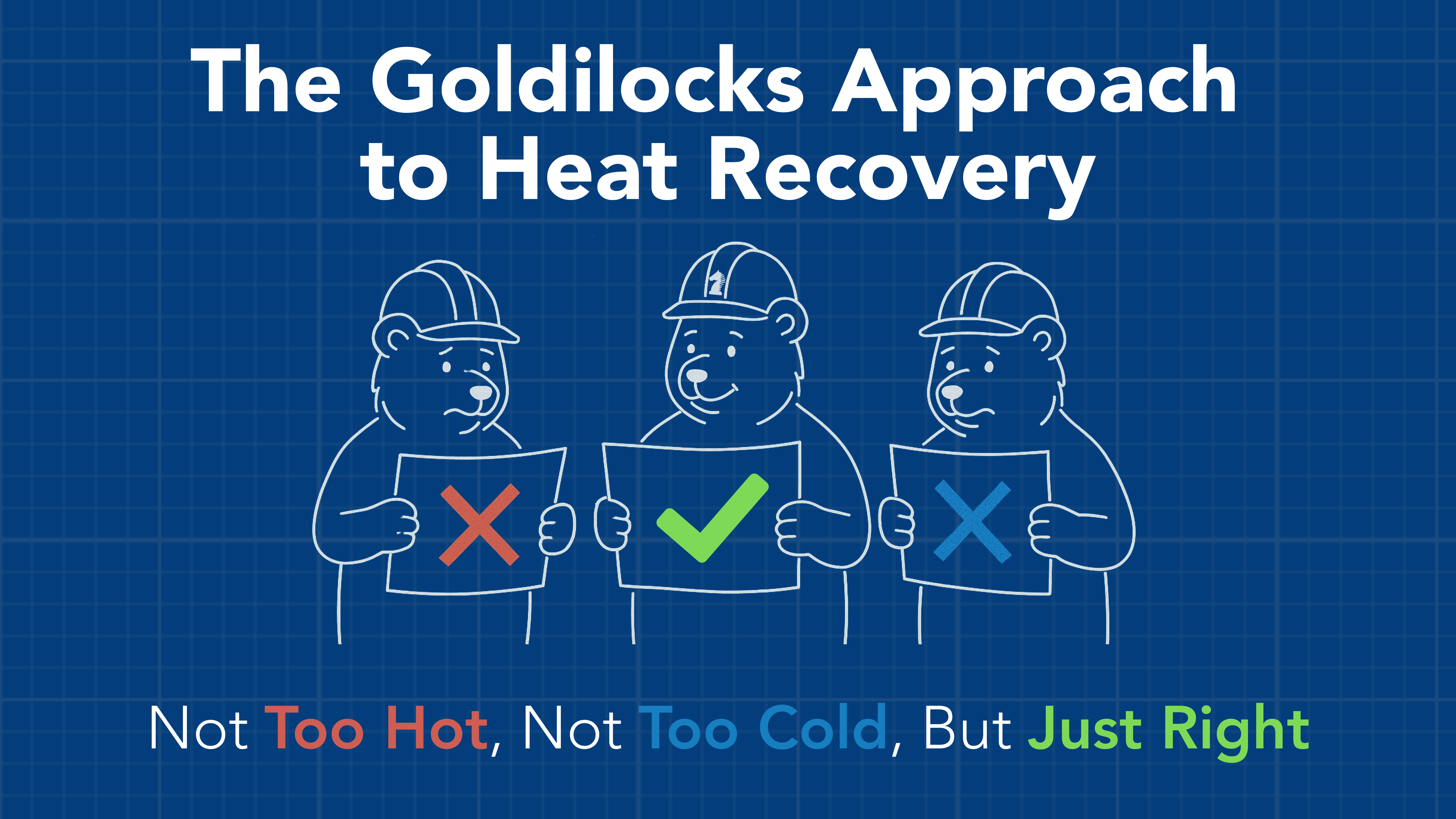By Mark Zoller, PE, CxA, LEED AP
Paladin, Inc

Like the fair-haired star of the familiar fairy tale who discovered that neither extreme is acceptable in a challenging situation – like porridge found too hot or too cold, or chairs that are too big or small – engineers face a similar challenge with heat recovery systems. We’re constantly searching for that “just right” solution that balances sophistication with practicality. As it happens, Goldilocks had it easier – she only had to test three options. We’re tasked with finding the perfect balance among countless variables.
The Human Factor Comes First
Before our team at Paladin dives into technical specifications or energy modeling, we work our way through a set of questions in an effort to understand the people who will interact with these systems. What’s the owner’s strategic vision? What are the operators’ capabilities? What level of maintenance can the facility sustain? Defining these human factors drives our design decisions long before we start calculating load requirements or sizing equipment.
For example, consider a seemingly simple system that relies on a few critical sensors for operation. Even with well-trained operators and straightforward controls, if those sensors fail or drift out of calibration, the most elegant solution can become inoperable. This is what I call “emergent complexity” – when apparently simple designs become problematic due to unforeseen real-world factors.
Key Considerations For Balanced Design
As a team devoted to optimizing the heat recovery strategy for a building, we work with our colleagues from across the building disciplines to nail down these essential factors:
Operational Capability
- Current staff expertise level
- Training requirements and resources
- Maintenance team bandwidth
- Documentation needs
System Resilience
- Sensor redundancy requirements
- Critical component backup options
- Failure mode protocols
- Recovery procedures
Future Flexibility
- Expansion potential
- Mission change adaptability
- Technology upgrade pathways
- Control system scalability
The Perils Of Playing It Too Safe
While over-design can lead to unnecessary complexity, under-design presents its own challenges. Nobody likes leaving money on the table, yet that’s exactly what happens when we’re too conservative in our approach to heat recovery. Sometimes engineers, wary of complexity, default to minimal solutions that ignore modern resources, thus missing significant opportunities for energy savings in the name of managing risk.
I’ve seen this play out in retrofit projects where previous heat recovery attempts failed to deliver promised savings. Often, it’s not because the concept was wrong, but because the implementation wasn’t thoughtfully balanced. In one case, we encountered a system that blended overly complex controls with oversimplified piping arrangements – a combination that practically guaranteed suboptimal performance. Neither were technically incorrect in their own right but, when combined, they just couldn’t provide a harmonious result.
Finding The Sweet Spot
So how do we hit that Goldilocks zone? It starts with modeling and evaluation. For existing buildings, we inventory current systems and create detailed energy models to assess both current performance and potential modifications. This allows us to test various scenarios in the electronic world before turning a single wrench, developing a roadmap that will inform clients at the earliest stages and guide our physical implementation.
Recently, we worked with an entity’s central utility plant where the existing heat recovery system had been abandoned due to poor performance. Rather than rolling in, tearing out the system and spending the client’s money on a wholesale equipment replacement, we carefully analyzed the system dynamics. The solution involved repositioning some piping and adjusting control sequences – a thoughtful recalibration that restored functionality without requiring major capital investment.
Another example is that of a system originally designed to achieve sensible heat recovery through a water/glycol loop between exhaust air handling units and 100% outside air handling units. While this was a fantastic design, both robust and elegantly simple, the operation and maintenance training component was missing. As a result, the system was taken out of service for years, leaving tremendous energy savings and emissions avoidance on the table. The solution was as simple as training the operation and maintenance staff how to ‘flip the switch on’ and what to look for when the switch turned off unexpectedly. In this case, the client had to expend zero dollars of capital investment for tremendous returns, simply because the human component was not adequately supported.
Designing For The Future
When it comes to their practical application, scalability and adaptability aren’t about predicting every possible future scenario – that’s impossible. Instead, the process is undertaken to create systems that can reasonably accommodate change while maintaining operational simplicity. So we return to our inquisitive ways and ask even more questions, like “Can we add another air handler? Could we modify setpoints without disrupting basic functionality?” Considerations like these should be built into our initial design approach.
The Power Of Collaboration
In today’s digital age, we have unprecedented tools for collaboration – from BIM coordination to energy modeling software. But the most powerful tool remains simple dialogue. When owners, operators, and engineers engage in open conversation about capabilities, constraints, and objectives, we develop solutions that work not just on paper, but in practice.
Just as Goldilocks eventually found her perfect bowl of porridge, chair, and bed, we too can discover the ideal heat recovery solution for each facility. The best systems are cleverly simple rather than simply clever, emerging from understanding the human element first, then applying technical expertise to create solutions that maintain their effectiveness throughout their lifecycle. When we achieve this balance – not too complex, not too basic, but just right – we deliver systems that benefit everyone: reduced operating costs for owners, manageable systems for operators, and improved sustainability for our planet.
After all, real engineering cleverness isn’t about creating the most sophisticated solution possible – it’s about ensuring everyone can live (and work) happily ever after with the system we design.
